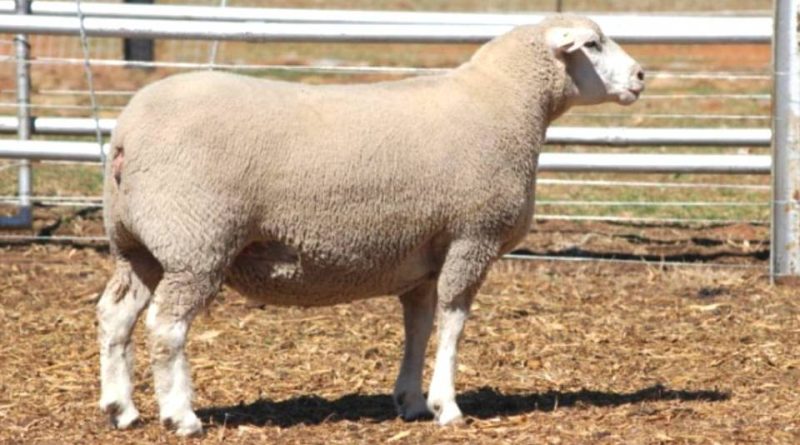Île de France
Île de France
The Île de France sheep breed is a sheep (Ovis aries Linnaeus, 1758) originally from the French region of the same name, with a main aptitude for meat production.
Systematics –
From a systematic point of view it belongs to:
Eukaryota domain,
Kingdom Animalia,
Phylum Chordata,
Mammalia class,
Order Artiodactyla,
Suborder Ruminantia,
Bovidae family,
Subfamily Caprinae,
Genus Ovis,
O. aries species,
Île de France breed.
Geographic and Area Distribution –
The Île de France sheep breed, in addition to being native to the homonymous region of France, around Paris, is widespread as well as in France and in other parts of Europe, such as in Ireland and other countries (including also in Italy) it is one of the best meat breeds in the world and is present outside Europe, in South Africa, Australia and in South and North America.
This breed is very widespread, as mentioned, not only in France but also in many European and non-European countries where it is bred both pure and used for industrial crossings for the production of heavy lamb (also in Italy). In fact, this breed constantly transmits its morphofunctional characters and is therefore widely used as an improving breed.
Origins and History –
The Île de France is a sheep breed originally from the French region of the same name, a historical and administrative region of France, whose capital is Paris and which, administratively, has jurisdiction over 8 departments (Essonne, Hauts-de-Seine, Paris, Seine- Saint-Denis, Seine-et-Marne, Val-d’Oise and Yvelines) and includes important centers such as Boulogne-Billancourt, Colombes, Saint-Denis, Argenteuil and Versailles.
This breed was developed in this historic region which is also an agricultural region, with crops and pastures, grazing sheep and breeding sheep.
It was a professor at the Maisons-Alfort Veterinary School who, at the beginning of the 19th century, had the idea of crossing a Merino bloodline, bred mainly for its wool, with the Dishley strain, a meat breed of English origin .
The work was first done at a veterinary college across the crossings of Dishley Leicester and Rambouillet, and was originally known as Dishley Merino.
In 50 years this crossing has led to a stable breed whose original improvement is exclusively due to empirical means of selection on the type.
Ile de France has been widely exported since the 1950s. The breed is present on all 5 continents and demand remains strong in Western and Eastern European countries, in the Mediterranean area and in South America.
Morphology –
The Île de France is a medium to large sized sheep.
It has a relatively short, hornless head with large horizontal ears. It has a broad build with a broad chest, withers, back, loins and rump. The thigh muscles are also highly developed.
The body is covered in white fleece up to the forehead, knees and hocks; the fleece is of the closed type with fine fibers (20-27 m).
The average weight of this breed, in the adult stage, ranges between 90 and 120 kg for males and 60 – 70 kg for females.
Productive attitude –
The Île de France is a sheep with an excellent production of meat but also of wool; it is one of the leading beef breeds and is a very high performing animal, with the best level of genetic guarantee in the world, and which has demonstrated its ability to adapt to all farming systems and regions with extremely diverse climates.
It is an excellent producer of meat (high twinning, marked earliness, good ability to breastfeed).
Lambs reach 30 kg at just over three months old and have a slaughter yield of over 60-62%. Good production of knitting wool (4 kg in sheep and 5-6 in males).
It is therefore a very precocious breed with good prolificacy (140-180%).
Ile de France sheep have the particularity and advantage of having a sexual cycle in periods of greater length of day, unlike most meat breeds.
The ewes still produce lambs at the age of 9-10 depending on the feed. One 11-year-old ewe was recorded as producing 29 lambs; this proves this feature.
This feature provides opportunities for farmers who want lambing three times in two years.
In addition to early maturation, the Ile de France sheep breed is characterized by a good balance between meat production characteristics and maternal qualities (prolificacy, suckling capacity).
In addition to closed systems, it is also well suited to free-range or semi-wild farming, with or without complementary feed for lambs, depending on the objectives and sales periods.
The lambs are exceptionally well-formed and have a high growth rate, making the Ile de France a breed that can be used both as a purebred and in crossbreeds to improve the meat production performance of more hardy breeds.
Lambs are born with a good coat of wool and are well adapted to cold climates.
Wool performs its insulating role in both cold and hot climates. Ile de France sheep thrive in the south of France, but also in Morocco, South Africa and Brazil, in conditions of extreme heat.
Ile de France sheep produce between 3 and 4 kg of wool per year, Ile de France rams 4 to 6 kg, for a wool fineness of 25 to 30 µ.
Furthermore, this breed is used, in addition to the production of meat, occasionally also as a dairy breed in the United States.
Guido Bissanti
Sources-
– Wikipedia, the free encyclopedia.
– Daniele Bigi, Alessio Zanon , 2010. Atlas of native breeds. Cattle, horses, sheep, goats, pigs reared in Italy, Edagricole-New Business Media, Bologna.

